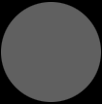Artwork Statements
Processprainting is a contraction of the words: process spray painting. It is a painting technique developed to reveal the nature of colours and demystify their interaction.
Processprainting is a method we have developed which utilizes process colours in a spray painting technique. Processprainting uses an enlarged colour separation dot screen through which the colours are sprayed. The large dots allow the viewer to see the interaction of the process primary colours. For example, the colour green seen from a distance, is upon closer inspection, composed from the interaction of yellow and cyan dots.
The Process Colour System is commonly used by the printing industry to reproduce full colour imagery. This industry has developed methods of reducing any coloured image into its three separate subtractive primary sub-images in a process known as colour separation. The multitudes of colour are then created by printing each colour separation in succession, via a matrix of variable sized dot screens. The dot size variations and juxtaposition of the primary colour dots in relation to each other resolve to create the various colours of an image. These colour separation dot patterns can be observed in any printed colour image with the use of a magnifying glass.
In process printing, the dot matrix spacing remains constant and the dot size enlarges or decreases, thereby varying the amount and the intensity of a particular colour. In processprainting, the dot matrix spacing also remains constant but so does the dot size. It is the intensity or amount of colour per dot area that varies.
In process colour printing the orientation and alignment of the dot screen matrix for each of the four colours is rotated in relation to the others to prevent the individual dot screen patterns from interfering with each other when overlaid. If the orientation of the dot screen matrix of the first colour, yellow for example, is horizontal, then that of the next colour, magenta, is rotated about seventeen degrees to that of the horizontal yellow matrix. The matrix orientation of the next two colours is each rotated about seventeen degrees in relation to the others. Processprainting also incorporates dot screen matrix rotation, but unlike the fine matrix in printing, the large scale of processprainting explicitly reveals this process.
Processprainting is a painting technique which mimics the techniques of process colour mechanical printing, and a human painter must act according to mechanical principles. This technique may seem similar to the work of Roy Lichtenstein who also incorporated a dot screen pattern in his paintings. His technique also used a fixed size dot matrix, but the intensity of the coloured dots did not vary. Also, he did not overlay different colours to produce admixtures. He employed a rather simple system similar to that used in comic books called a Ben Day Pattern. That being said, Mr. Lichenstein's work has been a great inspiration for our work.
Processprainting is distinguished by: the use of subtractive process primary colours; a fixed dot size but variable dot intensity; the successive overlaying of the four process colours, and dot matrix screen rotation leading to the successful creation of rosette pattern colour dot clusters.






